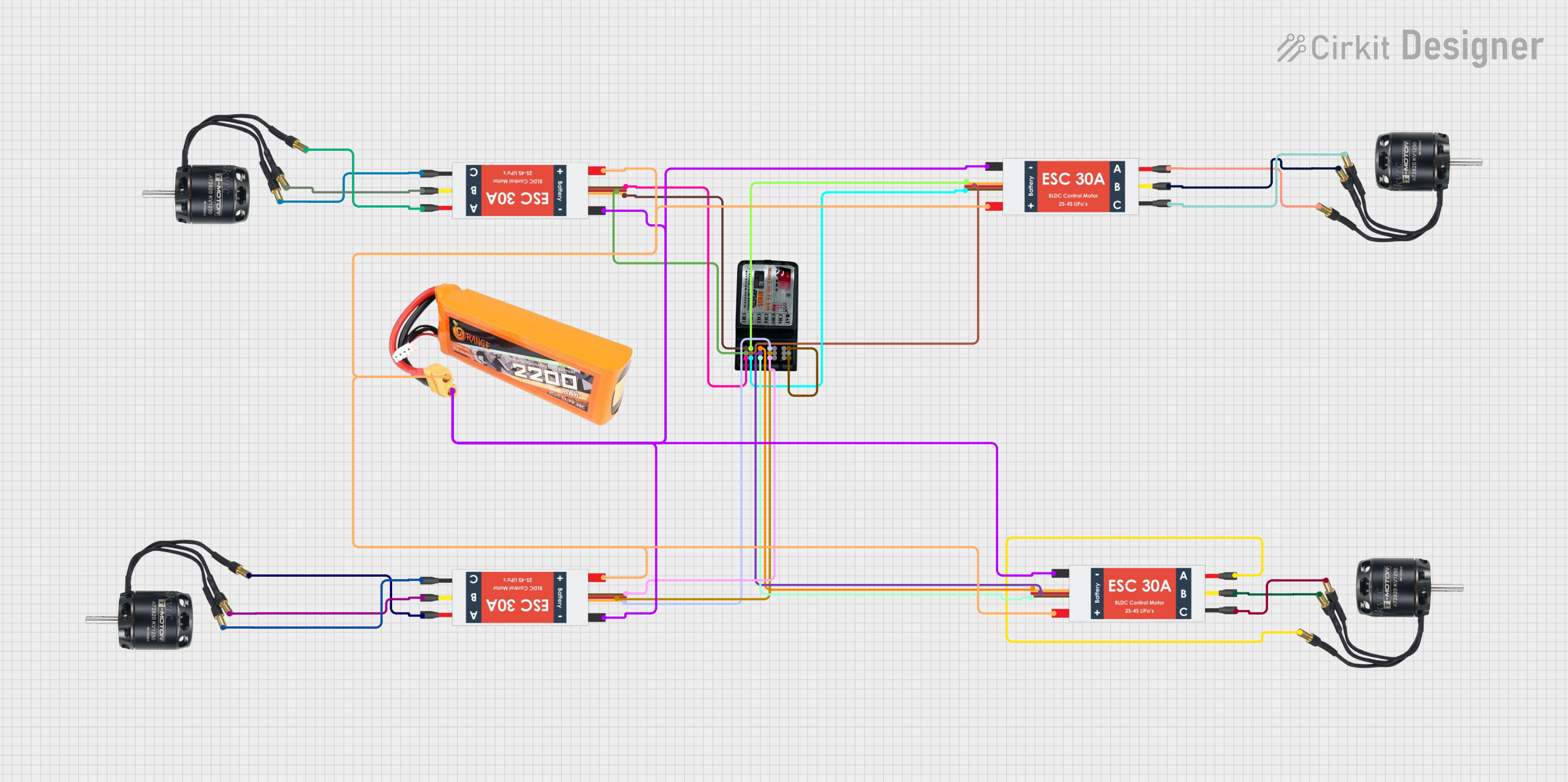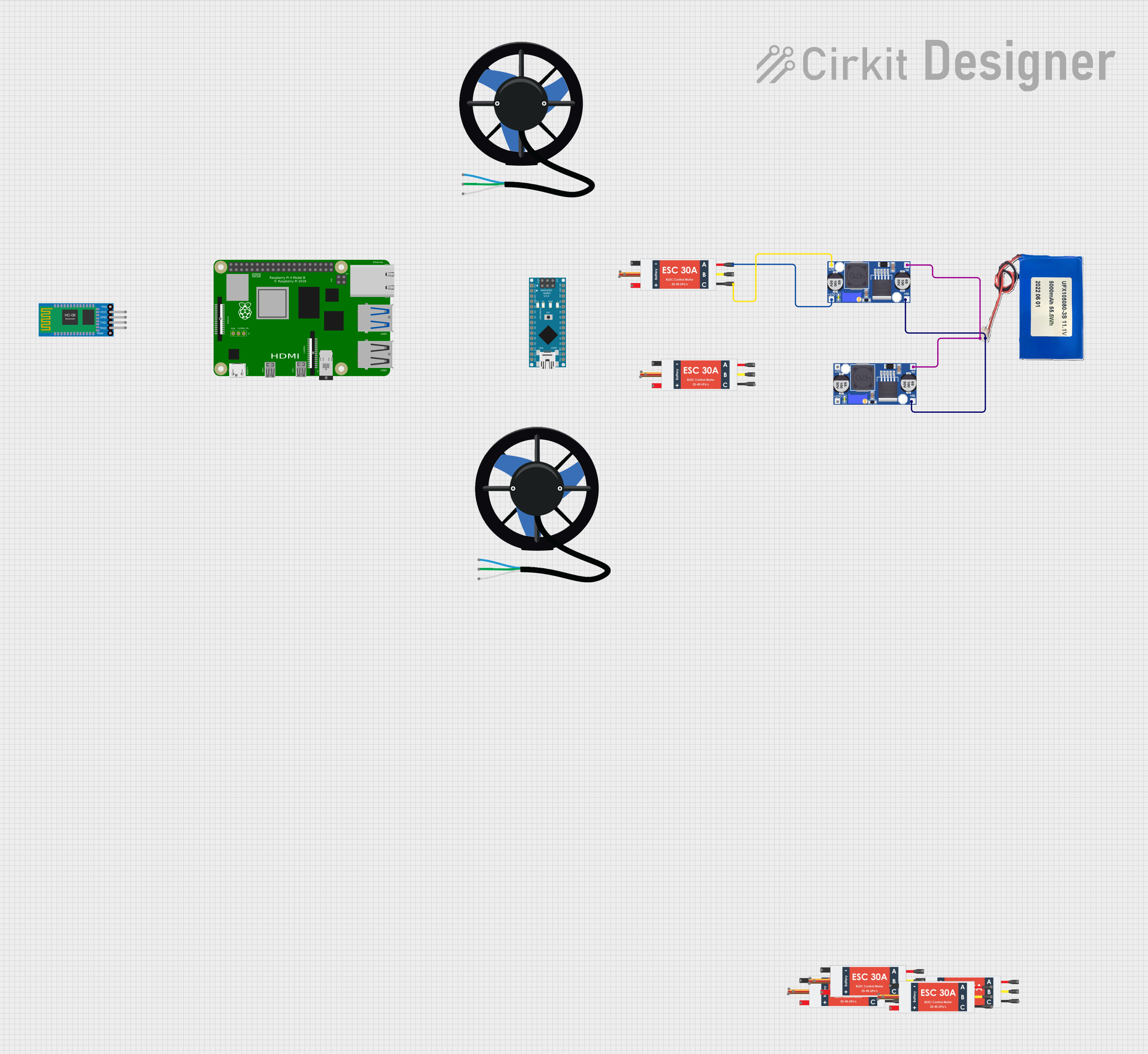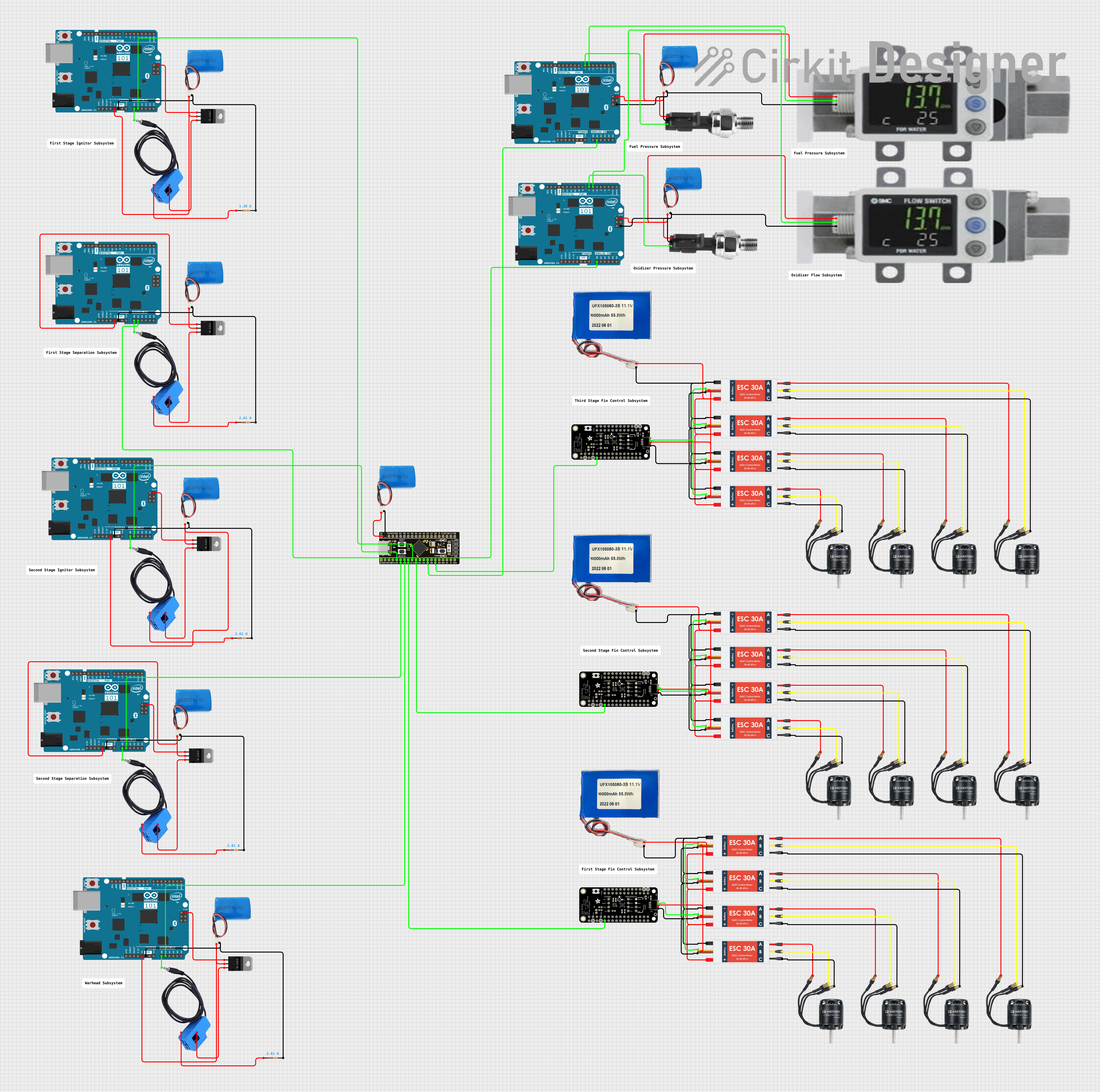
How to Use Electronic Speed Controller(ESC): Examples, Pinouts, and Specs

 Design with Electronic Speed Controller(ESC) in Cirkit Designer
Design with Electronic Speed Controller(ESC) in Cirkit DesignerIntroduction
An Electronic Speed Controller (ESC) is a crucial component in the realm of electrically powered remote-controlled (RC) models, drones, and electric vehicles. It serves as an intermediary between the power source (battery) and the motor, translating the control signals into precise power delivery to control the speed and direction of the motor. ESCs are widely used in applications requiring variable motor speed control, such as quadcopters, RC airplanes, helicopters, cars, and boats, as well as in electric bicycles and skateboards.
Explore Projects Built with Electronic Speed Controller(ESC)

 Open Project in Cirkit Designer
Open Project in Cirkit Designer
 Open Project in Cirkit Designer
Open Project in Cirkit Designer
 Open Project in Cirkit Designer
Open Project in Cirkit Designer
 Open Project in Cirkit Designer
Open Project in Cirkit DesignerExplore Projects Built with Electronic Speed Controller(ESC)

 Open Project in Cirkit Designer
Open Project in Cirkit Designer
 Open Project in Cirkit Designer
Open Project in Cirkit Designer
 Open Project in Cirkit Designer
Open Project in Cirkit Designer
 Open Project in Cirkit Designer
Open Project in Cirkit DesignerTechnical Specifications
Key Technical Details
- Voltage Range: Typically from 6V to 60V, depending on the model.
- Current Rating: Can vary from a few amps (A) to hundreds of amps.
- Power Rating: Dependent on voltage and current ratings.
- Frequency: The operating frequency range for most ESCs is between 8 kHz and 16 kHz.
- BEC (Battery Eliminator Circuit): Some ESCs include a BEC, which provides a regulated DC voltage output for powering the receiver and servos.
Pin Configuration and Descriptions
| Pin Name | Description |
|---|---|
| VCC | Power input from the battery (positive) |
| GND | Ground connection |
| Signal | PWM (Pulse Width Modulation) signal input from the receiver |
| Motor Outputs | Connections to the electric motor (may vary based on motor type) |
| BEC VCC | BEC positive output (if available) |
| BEC GND | BEC ground output (if available) |
Usage Instructions
Connecting the ESC
- Power Connection: Connect the ESC's VCC and GND pins to the battery's positive and negative terminals, respectively.
- Motor Connection: Attach the motor wires to the ESC's motor output terminals. The order may need to be adjusted for correct motor rotation.
- Receiver Connection: Connect the ESC's signal wire to the throttle channel on the receiver.
Calibration and Programming
- Calibration: Most ESCs require calibration to the transmitter's throttle range. Follow the manufacturer's instructions for calibration.
- Programming: Some ESCs can be programmed for different parameters like throttle curve, braking, or battery type. Use a programming card or software if available.
Best Practices
- Cooling: Ensure the ESC is adequately cooled during operation. Overheating can damage the ESC.
- Battery Compatibility: Use a battery within the ESC's voltage range to prevent damage.
- Firmware Updates: Keep the ESC's firmware updated for optimal performance and new features.
Troubleshooting and FAQs
Common Issues
- Motor not spinning: Check connections, calibrate the ESC, and ensure the throttle channel is active.
- Overheating: Reduce load, improve cooling, and check for proper motor and propeller size.
- Erratic behavior: Recalibrate the ESC, check for signal interference, and ensure the battery is charged.
FAQs
Q: Can I use any ESC with my motor? A: The ESC must match the motor type (brushed or brushless) and handle the motor's voltage and current requirements.
Q: How do I reverse the motor direction? A: Swap any two of the three motor wires connected to a brushless ESC.
Q: What does the BEC do? A: The BEC provides power to the receiver and servos, eliminating the need for a separate receiver battery.
Example Arduino UNO Code
#include <Servo.h>
Servo esc; // Create a servo object to control the ESC
void setup() {
esc.attach(9); // Attach the ESC signal wire to pin 9
esc.writeMicroseconds(1000); // Send minimum signal to the ESC
delay(1000); // Wait 1 second
}
void loop() {
int throttle = 1500; // Set throttle signal (microseconds)
esc.writeMicroseconds(throttle); // Send throttle signal to ESC
delay(15); // Wait for the ESC to respond
// Note: Adjust the throttle value as needed for your application
}
Note: The above code is a basic example to control an ESC with an Arduino UNO. The writeMicroseconds function is used to send a precise signal to the ESC, which interprets this as the throttle position. The throttle value typically ranges from 1000 (off) to 2000 (full speed), with 1500 being the midpoint. Always start with the minimum signal and gradually increase to prevent sudden starts.
Remember to consult the ESC's manual for specific instructions and safety information. This documentation is intended as a general guide and may not cover all aspects of ESC usage.